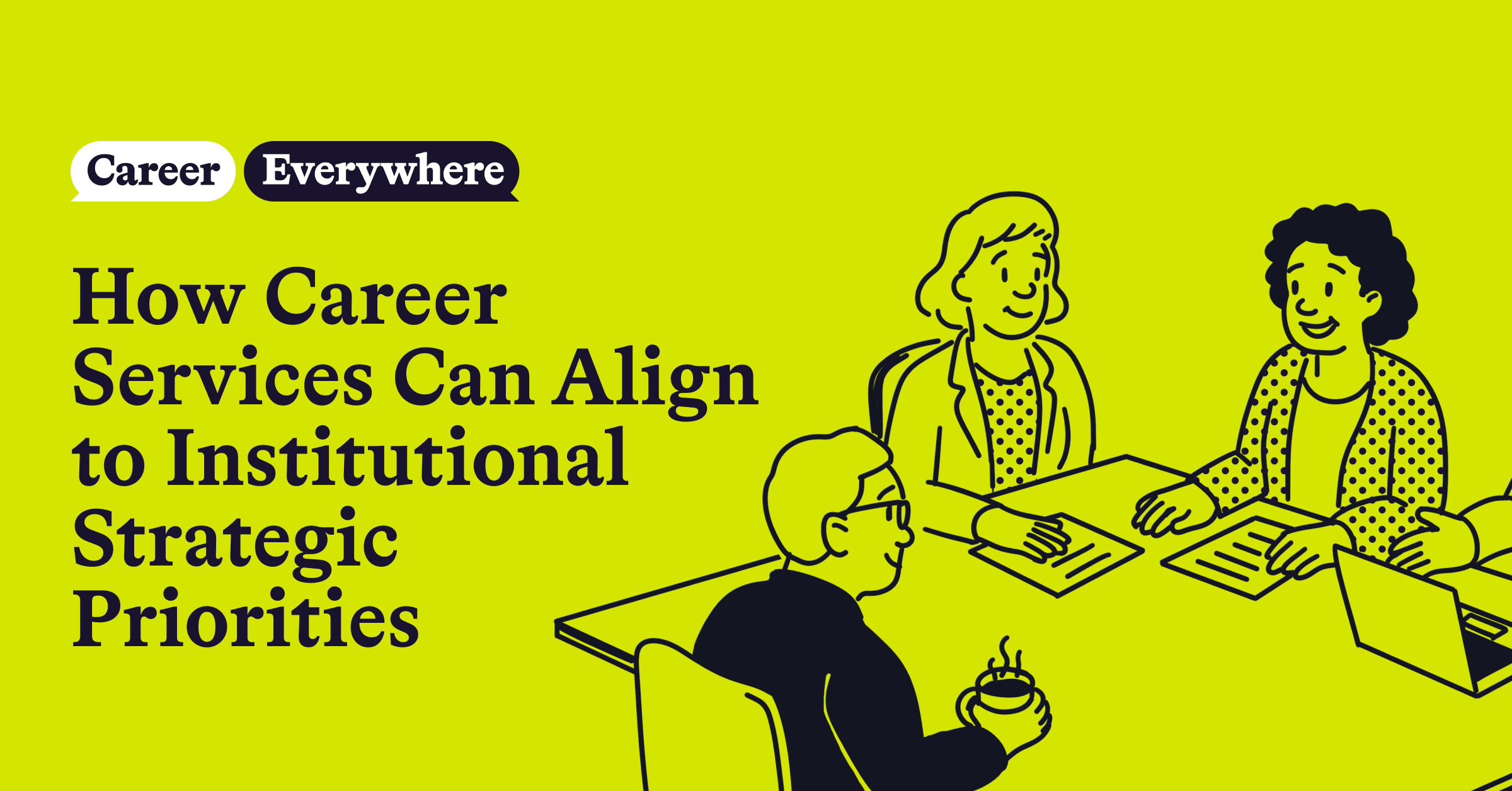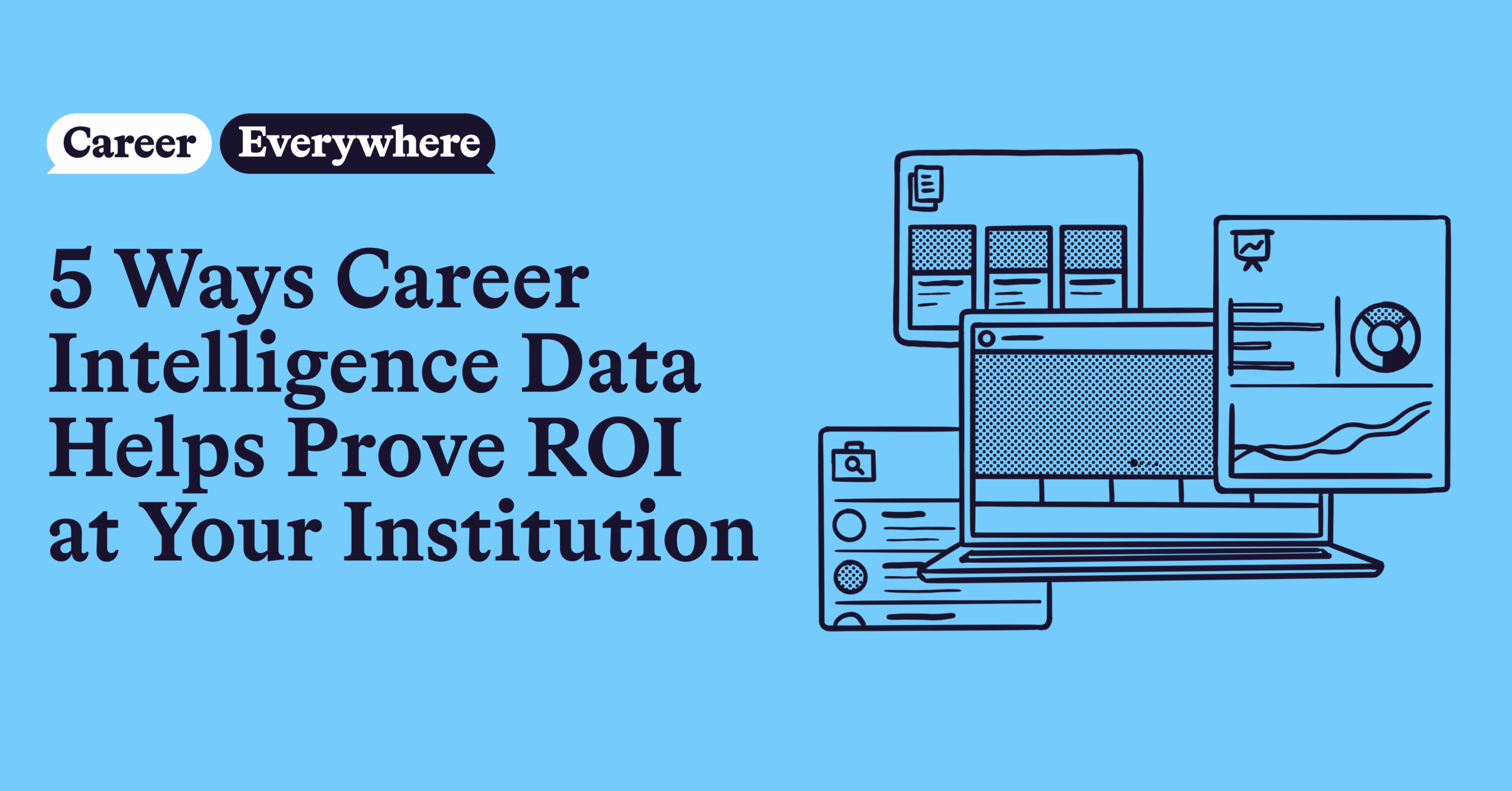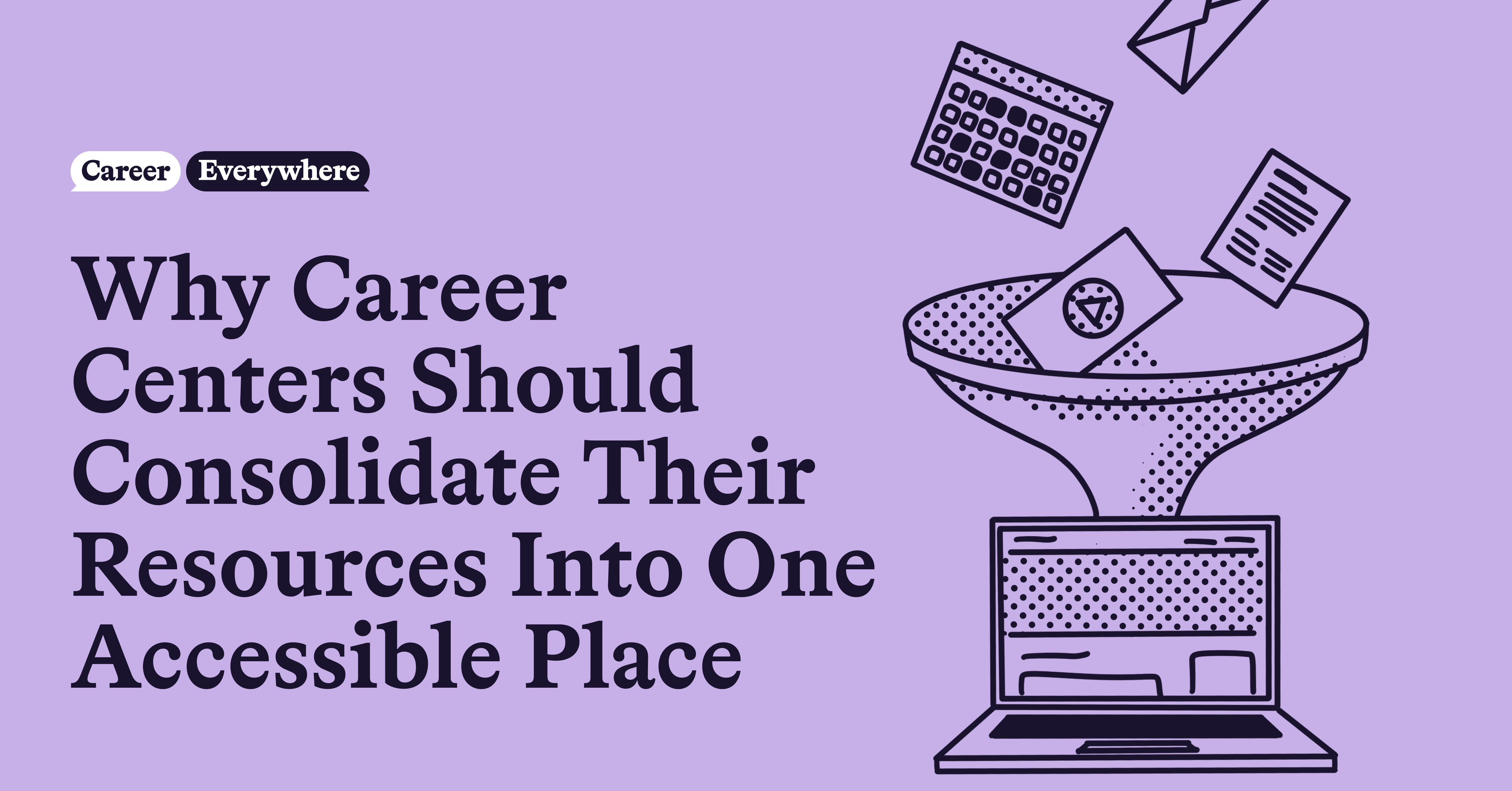
Career centers in colleges and universities typically have no shortage of career resources, information, tools, and technologies—along with the in-house expertise and institutional knowledge of their career coaches.
According to a recent survey we conducted, about 45% of career centers offer five or more tools or technologies to their students.
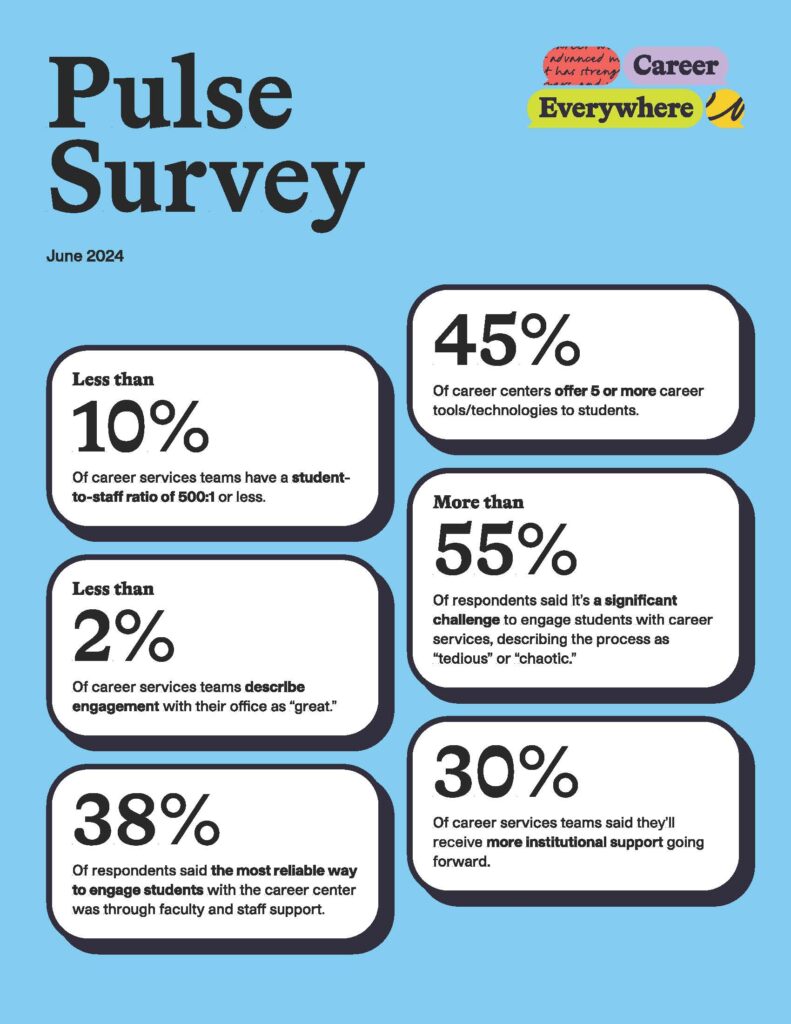
However, many career centers struggle to organize and display those resources in a way that’s easily accessible to students and other stakeholders. Too often, the resources are spread across dozens of different web pages (or websites), take too many clicks to find, or require multiple logins to access. Perhaps that’s why less than 2% of career services teams we polled describe engagement with their office as “great.”
Any user experience expert will tell you that’s not a great way to inspire website visitors to come back and peruse your content.
This is especially true for career services teams in higher education who are working with Gen Z students—a generation that’s used to content being curated specifically for them based on their interests.
TikTok, YouTube, Instagram, Netflix… all of these platforms keep users engaged because the content is relevant, in one accessible place, and it’s highly curated.
While, sadly, career centers don’t have the budget and headcount of these media/content juggernauts, there are lessons to be learned. Most importantly, it’s crucial that career services teams prioritize their virtual “front door” (aka their website) and make it easy to bring their many career resources into one user-friendly place.
That’s where a virtual career center (aka the No. 1 tool for resource consolidation) comes in.
Benefits of a curated, consolidated virtual career center
When it comes to career services, “consolidation” means bringing all career resources, tools, and technologies into one digital space—under one login—that curates those resources by career interest and/or identity and is accessible 24/7.
Not only does this improve student engagement with career resources, but it’s also the core mission of career services—and the right thing to do.
“The institution has a responsibility to, at a bare minimum, help with equitable access to resources,” said Gene Rhee, Executive Director of Mohr Career Services at the University of Oregon Lundquist College of Business.
“And the reality is we have many students that, for a variety of reasons, don’t want to come to the career center. Some of them can’t come to the career center. Think about how many of the students are working or don’t have childcare or whatever the reason is, they can’t make it. We have an obligation to ensure that they have access to things. And without technology, I don’t know how you do that.”
That’s why hundreds of institutions (including the University of Oregon) have invested in the virtual career center, powered by uConnect. The platform allows career teams to consolidate and curate their resources, making it easier for students to engage in deeper, self-guided career exploration with the full range of career resources you and your team offer.
For example, imagine a world where a student is watching videos about career pathways in the data science industry. What if, in one click, they could then:
- View open internship opportunities in data science available on your job board
- Review relevant labor market data to understand employment trends in the data science field
- Read articles about skills in demand
- Connect with a mentor who works in the space
- And more
And what if they could do all of this without ever having to leave the page or login to another platform?
That’s the ideal, right? Here are a few additional benefits of a virtual career center, along with some examples of the institutions that have enjoyed them:
1. Increased student engagement
This is likely the No. 1 goal for any career center in higher education. Of course, we all want as many students to take advantage of our resources as possible. We want them to use those resources to build meaningful lives and careers. After all, that’s why we do what we do!
Career services teams who invest in a virtual career center are far more likely to see increased student engagement because their resources are consolidated into one place and curated based on student interests. Plus, students don’t have to remember a million different logins and passwords in order to access those resources.
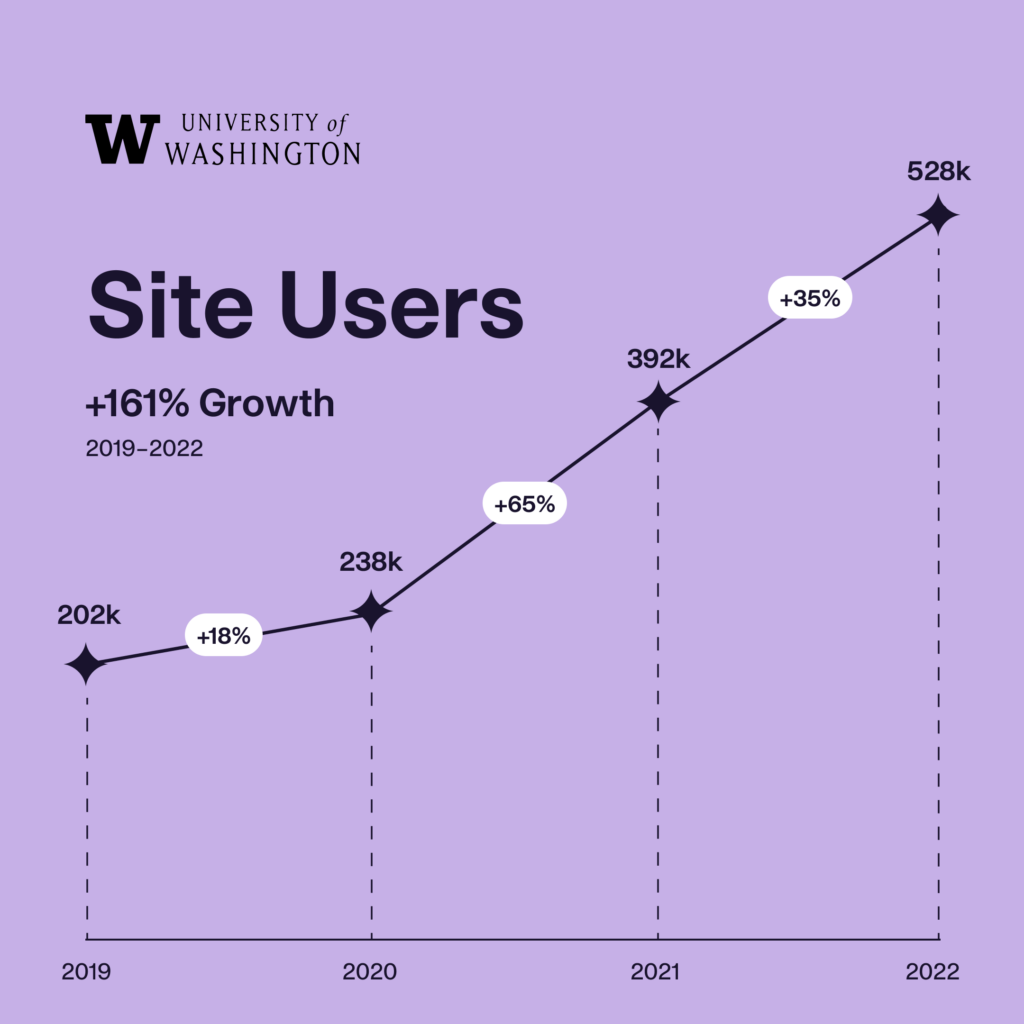
That’s because a virtual career center integrates with all of the resources to pull the information that usually sits behind a login and makes it easily accessible.
The University of Washington launched their virtual career center (powered by uConnect) in 2016. Since then, they’ve integrated more resources and tools (like Handshake, PeopleGrove, Vault Guides, Candid Career+, LinkedIn Learning, labor market data, outcomes data, and more). They’ve also curated those resources, along with a robust library of articles, events, job and internship postings, and more, into dedicated digital communities based on career interest and identity/affinity. Here’s the Arts/Media/Marketing career community, for example.
They’ve seen a 533% increase in community page views since launching the communities, and they saw a 161% increase in total site users from 2019-2022. Talk about consistent growth!
The University of Oregon Lundquist College of Business has also seen an impressive increase in engagement since launching their virtual career center (powered by uConnect). From January 2022 to January 2023, they saw a 798% increase in page views on their virtual career center.
2. More usage of the resources and tools you already pay for
Career services teams are incredible at sourcing the best and most up-to-date career resources for their students. But many career centers find that students aren’t using those resources as much as they would like.
Whether students can’t find them, or they just don’t know they exist, it’s frustrating for career services leaders to pay for tools that aren’t getting used—especially when the budget is tight already.
That was the story for Dr. Audra Verrier of Loyola Marymount University. When she took over as the Associate Vice Provost of Career and Professional Development at LMU in January 2023, she saw that the career center had all the “bells and whistles,” including Handshake, VMock, Big Interview, LinkedIn for Learning, and more.
But those tools weren’t getting nearly as much use as Verrier had hoped for.
So her team brought on uConnect’s virtual career center platform to bring all of those resources together into one, easily navigable place where everything would be available to students 24/7.
“uConnect was a no-brainer for us. It’s going to pull all these things together, it’s going to integrate them. It’s going to serve them up to students on this really nice platform that tells them step-by-step what to do, then drive traffic to all those things that we’re already paying money for,” Verrier said.
3. An elevated role for the career center
The University of Miami Toppel Career Center has a motto that drives all of their initiatives: “Career services is everybody’s business.”
And it’s true! Career should be integrated into nearly every aspect of a college or university. And yet, too often career services isn’t given a seat at the table because senior leadership and other stakeholders on and off campus don’t understand what the career center does or all the resources they have to offer.
But when a career team invests in a virtual career center, with all of their resources consolidated and curated into one accessible and visually appealing space, that can go a long way in getting the attention of other stakeholders across campus—especially faculty.

For example, the University of Miami does this by creating a dedicated faculty and staff engagement hub on their virtual career center (powered by uConnect). All of the resources faculty and staff could need to get involved with the career center, integrate career into their classrooms, or have meaningful career conversations with students can be found in the hub. This includes a much-appreciated faculty toolkit PDF.
“It’s not that faculty don’t want to work with us or collaborate with us, it’s that they have no idea what all we do,” said Christian Garcia, Associate Dean and Executive Director of the Toppel Career Center at Miami. “I can’t tell you how many times we heard from faculty, ‘You do all of this?’”
Conclusion
Consolidating and curating career resources and making them available to anyone, anywhere, anytime is the future of career services. That’s why hundreds of career centers have invested in a virtual career center (like the one powered by uConnect).
With the ROI of higher education consistently under attack, career outcomes matter more than ever. Thankfully, most career centers are more than ready to step up, increase engagement, make resources accessible, and show the rest of campus what they have to offer.
Interested in launching a virtual career center at your institution? Fill out the form below to schedule a demo with the uConnect team.
